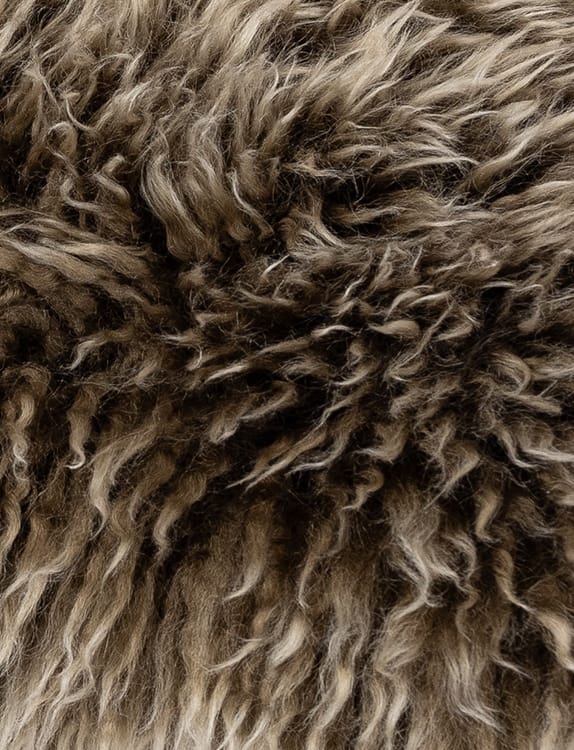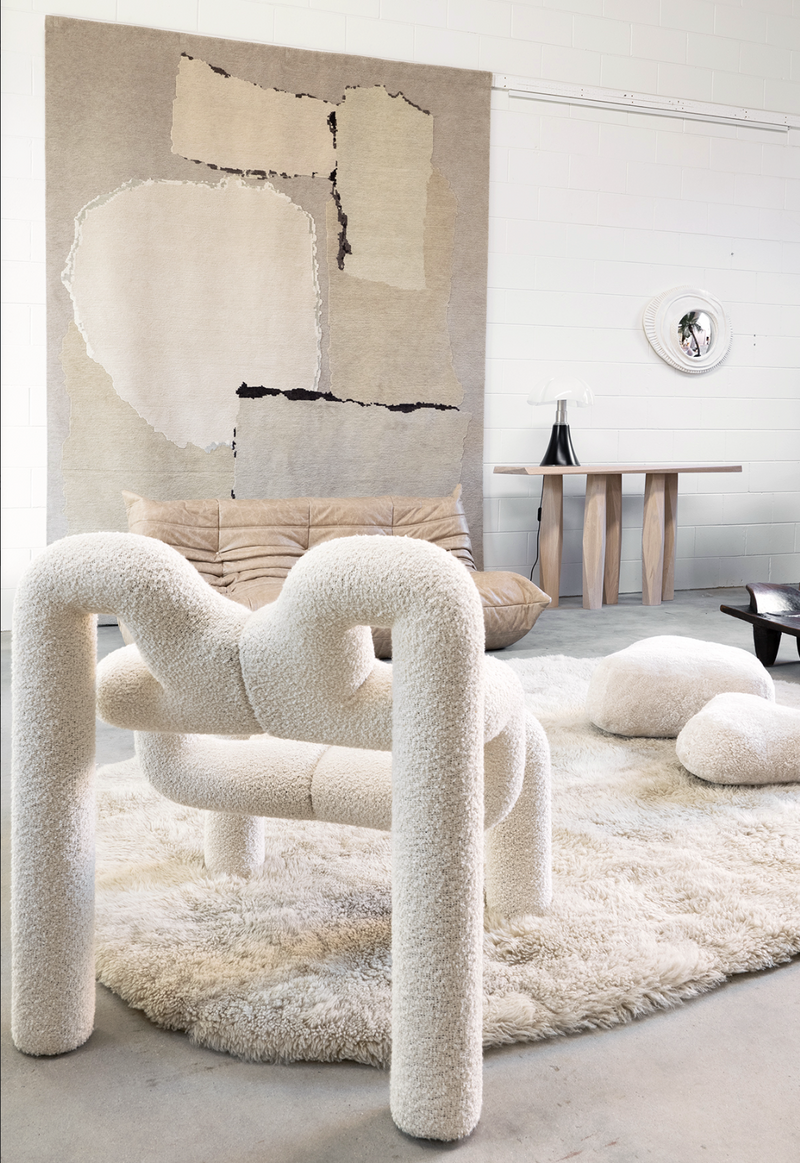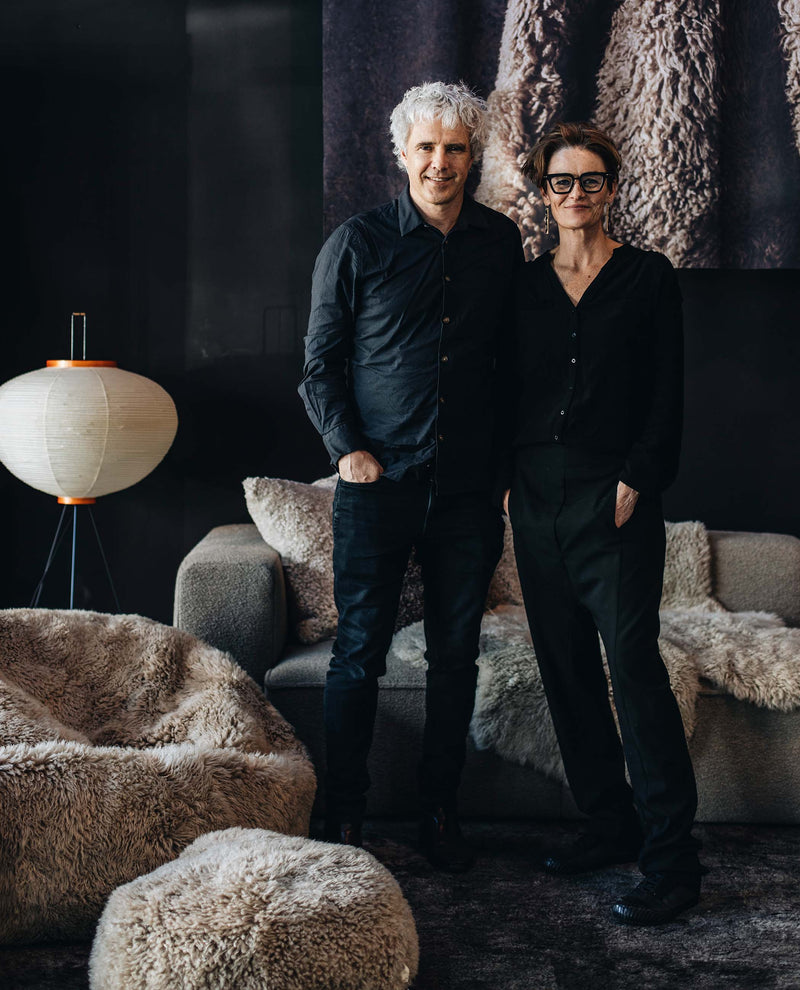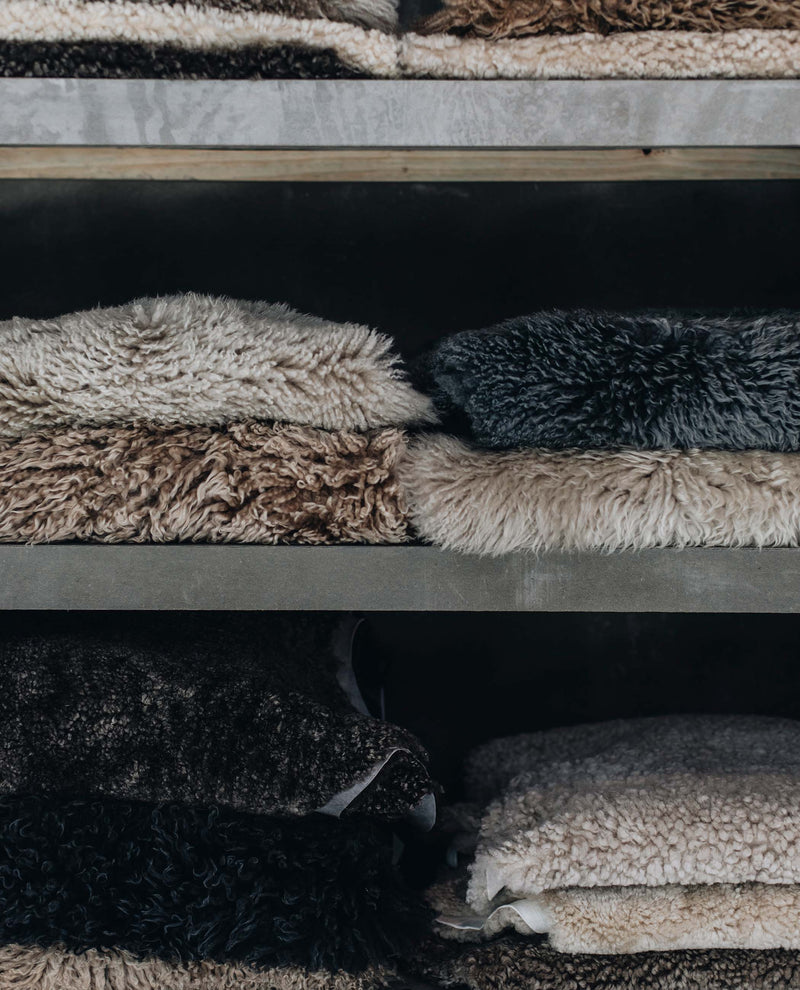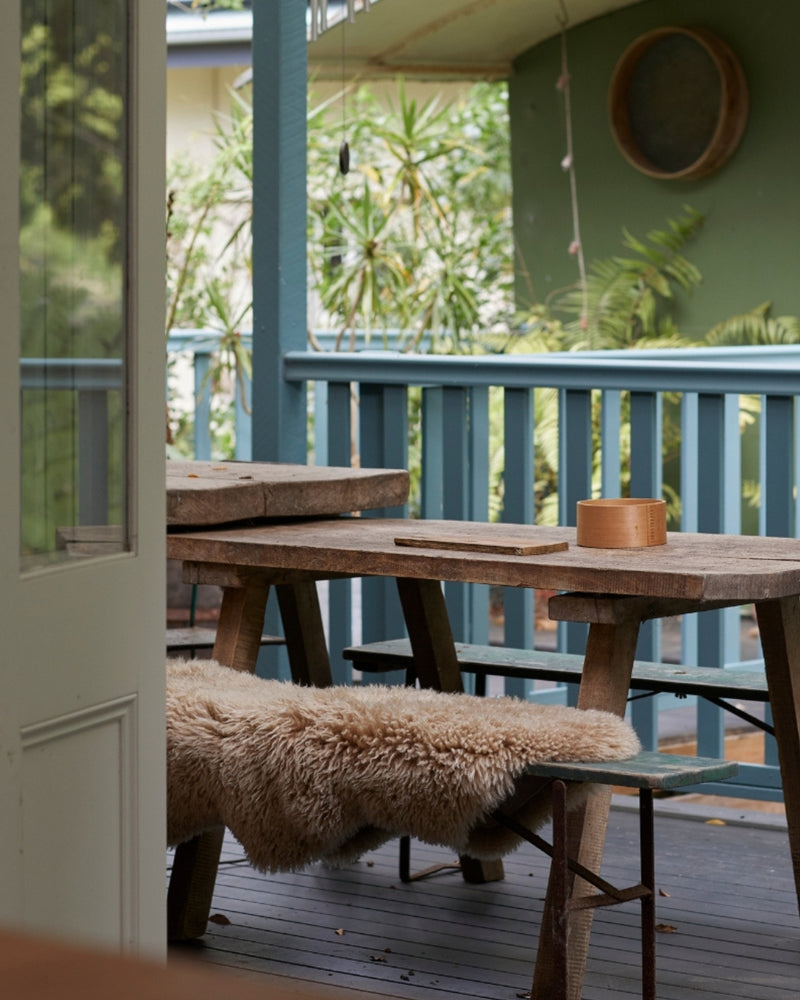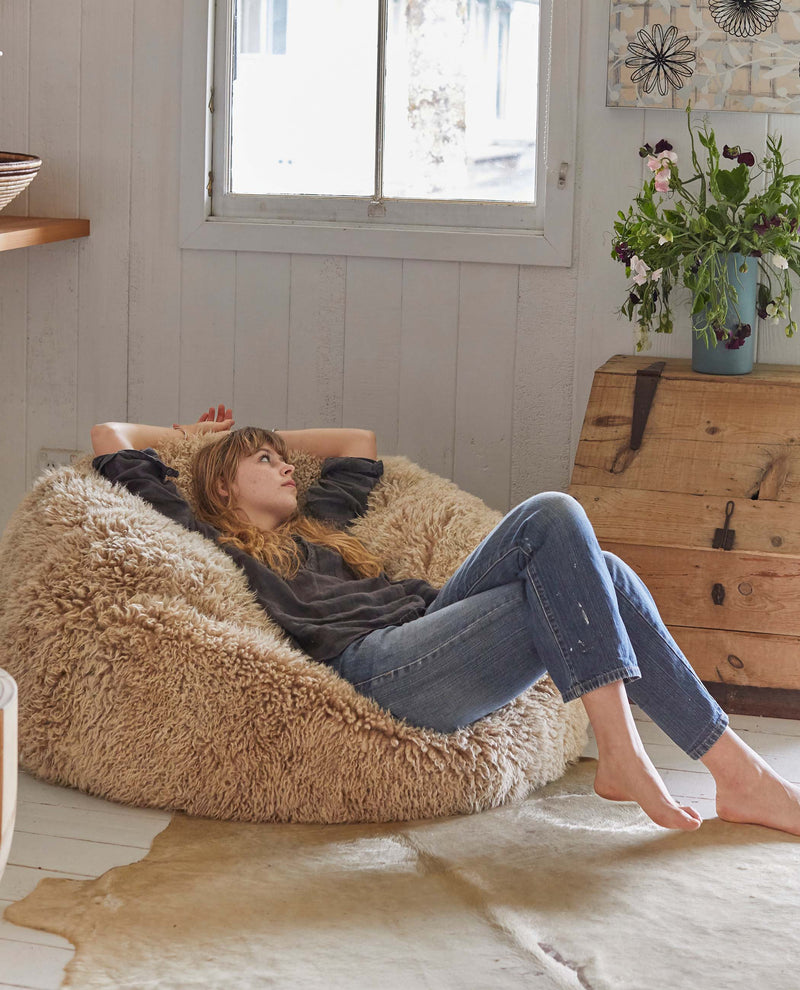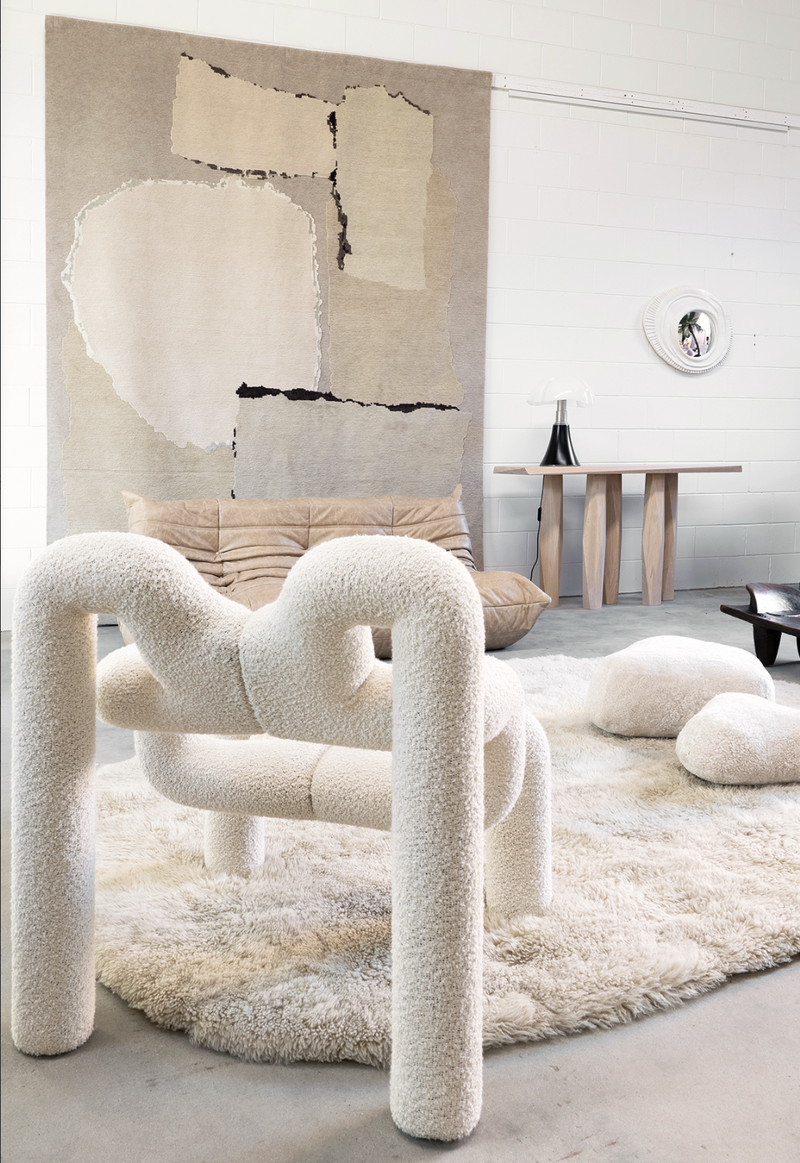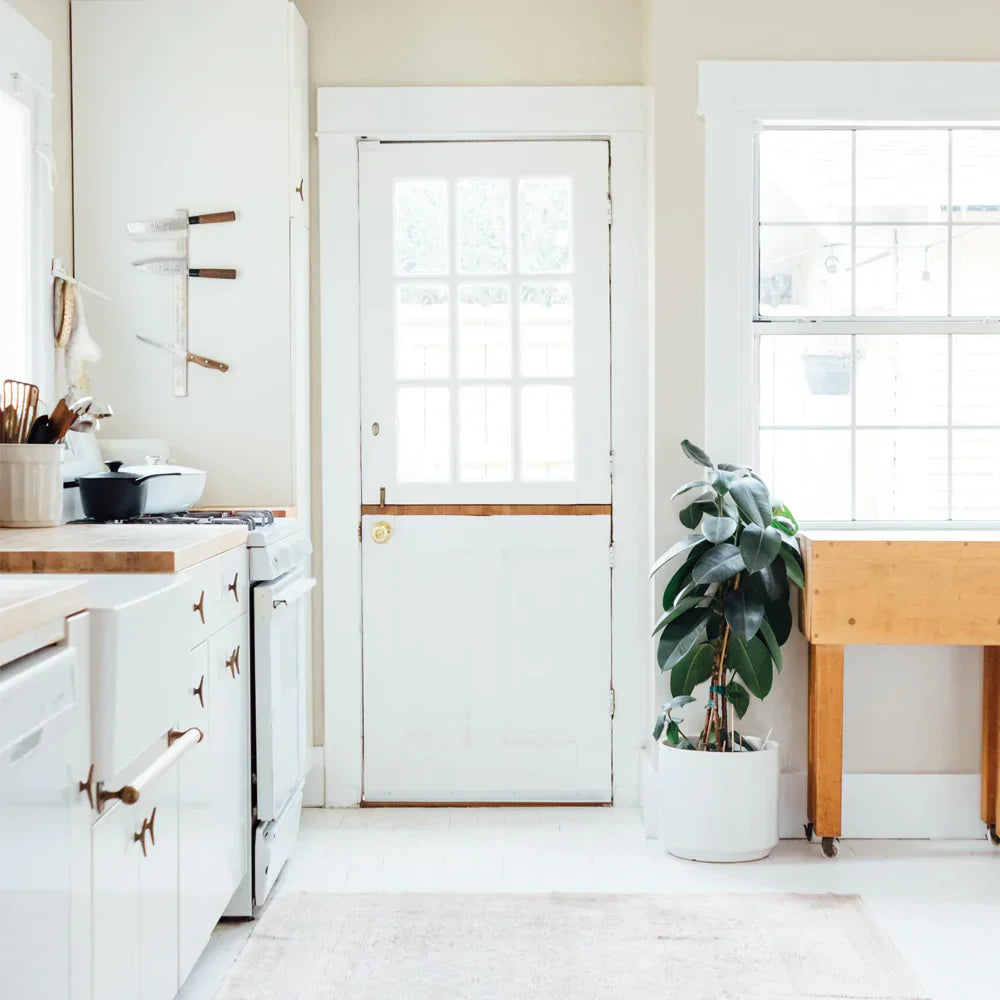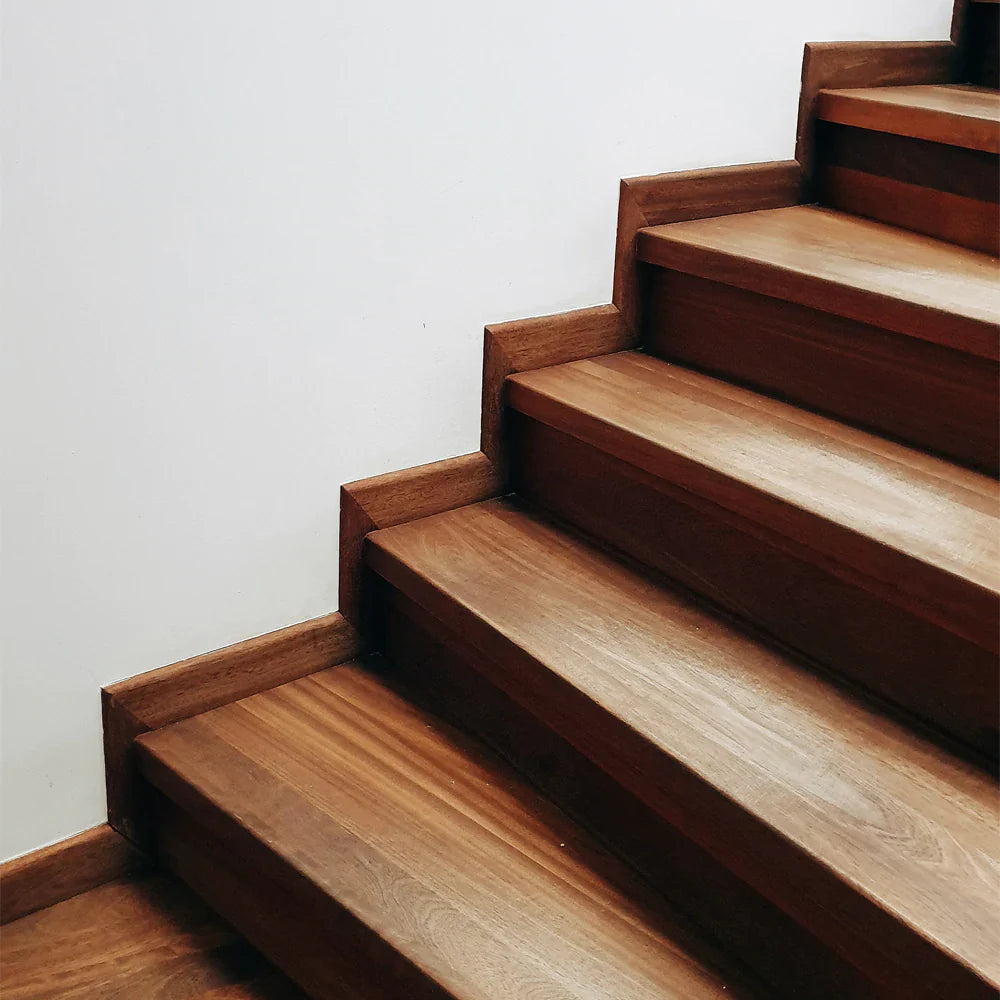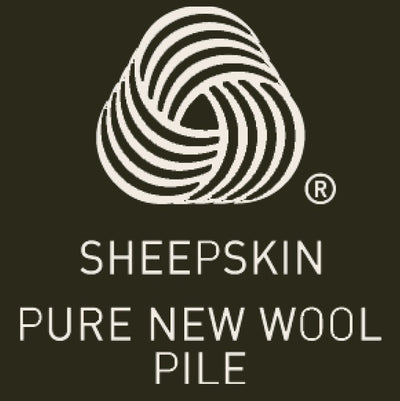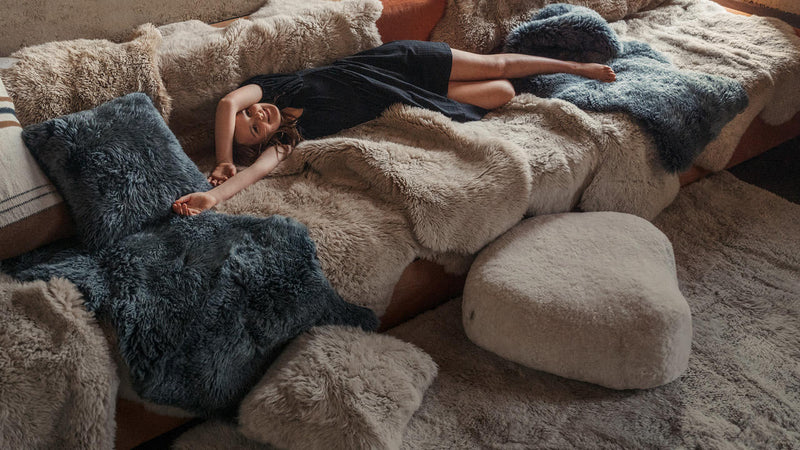Whether you call them footstools, ottomans or pouffes, there are so many uses for these multi-functional and often interchangeable furniture pieces. From providing occasional seating to stashing a clothes mountain or dividing a room; footstools, ottomans and pouffes are pieces that just keep on giving.
An opportunity to add dynamism, colour, and most importantly – comfort to your home. As a small furniture piece, footstools are a low risk opportunity to make a statement with your interior. Choose a showstopping shade or a unique texture to bring some of your personality and individuality into your space.

What are footstools used for?
Footstools offer far more value to your home then you might initially appreciate. Aside from being a luxury furniture piece, they serve multiple other purposes in our modern homes. On top of a footstools primary use as a soft surface to elevate your feet on, they also offer extra seating to accommodate house guests, can be used as a side table to rest magazines, books and TV remotes on or can even sub in as a small coffee table when you’re short of a place to rest a tray of drinks. Whether you want to pile all your friends together for a movie night, or you're simply seeking a better lounging position, these little gems can do it all.
These are some of the unique ways you can use yours at home:
- Give kids their own kid friendly seating – If you have a playroom or play area, you might not want (nor have the space for) dedicated seating. Footstools could be a good solution for smaller members of the family to sit on as needed.
- Make it work hard in a small space – Homes are alot smaller now than they used to be and often we are using spaces for more than one thing. Having multi-functional furniture can be an excellent asset to your home, giving you the flexibility to pull and ottoman into a different space to serve a new purpose depending what is happening at home.
- Get down to ground level – Sometimes after spending all day sitting in the car or at the office, getting down onto the floor and stretching out can feel great. Using a small footstool or ottoman as a head or arm rest is a nice way to make full use of your space and furniture.
Are there health benefits to using footstools?
Most of us would jump at the opportunity to be able to put our feet up at the end of a big day, purely for the comfort factor. It's a bonus to know that this seemingly insignificant act can also have some really beneficial impacts on our health. By reducing pressure on your legs, putting your feet up on a footrest can help to prevent blood clots related to deep vein thrombosis, relieve pressure on the lower back, and decrease swelling and varicose veins.
Using a footstool helps to improve circulation and a condition known as lymph-odemia. This is a very common issue related to joints and muscles, and using footstools can certainly help in lowering the pain and the intensity of the problem suffered by the person. The drainage from the joints is greatly improved with the help of footstools.
Key health benefits of regularly using a footstool:
- Boost circulation
Sitting for long periods as we are all guilty of, can eventually result in poor circulation. Raising your feet using a footstool can significantly help improving circulation
- Reduce the risk of lower back issuesWith a proper footrest, you reduce stress on your legs and lower back. When the blood circulation is properly maintained to your hip and legs, it can reduce stress on your spine and provide good support for your lower back.
- Positively impact posture
The simple addition of a footrest can reduce strain and promote better posture, all while preventing leg discomfort.
- Tension Relief for Your Feet
Footstools keep your feet in a neutral position. This is especially relevant for women who wear shoes with different height heels from one day to the next, such as high heels, sandals, or boots. Being on your feet all day or wearing footwear of varying heights all day can strain the muscles and tendons in your feet, including the Achilles tendon.
This can lead to foot pain and other foot problems. Putting your feet up on a footstool at the end of the day can make a tremendous difference in the health of your feet.
- Less Pressure on Your Legs
Sometimes, even sitting on an ergonomic chair is not enough to reduce aches and pains associated with office work. You might still find that you get aches and pains throughout the day that are only lessened when you stand up.
Putting your feet up on a small footstool or ottoman at the end of the day after having your legs under your desk or sitting in the car for hours can help to support your body.
- Natural Relaxation
If you tend to tense up when you’re stressed, or if you are naturally fidgety, have the ability to roll your feet around can be a tremendous release of stress and anxiety relief. Moving your feet even just a little bit can ease tensions and reduce your blood pressure levels.
Another way to get the full health benefits from your footstool or ottoman is to get down to ground level, lay down on your back and rest your legs up on your footstool. Raising your feet above your heart and reversing the effects of gravity on your legs and feet, is a very calming and relaxing position especially if you have spent the day on your feet. Putting your feet up helps to bring blood back towards your heart, and promotes lymphatic fluid circulation.
There are so many different variations on the footstool. The height, size and even your material choice can aid in the potential health benefits of raising your legs. Sheepskin footstools for example have the combined health benefits of sheepskin as a material and the footstool itself. This results in a product that can be a huge asset to your well-being. Sheepskin is a well known product in the health industry, used extensively in healthcare and medical facilities for a number of reasons, most commonly for treatment and prevention of pressure injuries and bedsores.
Here are some of the benefits natural wool fibers provide:
- The organic composition of wool fibers allows it to be soft and springy at the same time. The weight can then be distributed across the body to lessen the tension on pressure points.
- They do not impart friction on the skin like ordinary fabrics.
- Sheepskin lets air flow over the skin. This provides more ventilation and breath-ability qualities for the skin.
- Wool fibers counter bacterial germination and other pathogens.
- Sheepskin keeps its warmth after absorbing varying quantities of moisture.
- Supports to relieve aches and pains
- Regulates body temperate
- Improves blood circulation
- Hypoallergenic
These characteristics are the reasoning for why vast amounts of medical practitioners decide to use sheepskin medical products. All of these benefits can be translated into everyday self care when you introduce sheepskin into your home decor.
How do you place a footstool?
Placement of your small footstool should be based on how you plan on using it. If you are most likely to use your footstool as a footrest arrange it near your most common seated areas so you can make full use of it when you need it. If you plan on using it to lean on while you lounge on your floor rug, your footstool can go virtually anywhere – next to the sofa, in the corner of the room or adjacent to the entertainment system. If you’re using the ottoman as more of a statement piece, place it between your seating arrangement to mimic a coffee table, or somewhere visible for you, your household and visitors to admire. From there, you can style it as you please – add a tray for holding your beverages, books and other accessories, or keep it comfortable and drape your favorite throw blanket over the top.
Rearranging and styling your furniture makes more of an impact than you would believe. Taking a moment to reconsider if some of your tired pieces could be re-homed and whether or not a less is more approach could work for you can have profound difference to how you live in your space.
How tall does a footstool need to be?
Footstools come in a variety of shapes and sizes. Traditionally a ottoman would be slightly shorter than the seat height of the lounge chair. Think about height and proportions depending on where you intend to use your footstool most. It is not recommended to have a footstool that measures taller than your couch or the seating you intend to use it with most often. This is purely due to comfort and as always personal preference. It's best to always play it safe and measure your couch before purchasing a new footstool or ottoman and try out a few different options to find out what is most comfortable for you.
A taller footstool design works brilliantly if you have taller than standard seating arrangements or intend to use your footstool as a additional side table occasionally. Smaller, softer footstools are great if you intend on using it like you would a floor cushion or have low seating or small children who would be likely to use it as a perch.
When considering your purchase think about your space in the room, height of your current sofa, if you need storage, who will be using it and how it will most commonly be used.
Are footstools fashionable?
Not so very long ago, every self-respecting home proudly boasted at least a pair of footstools. With the introduction of the lazy boy and over-sized couches that are generous enough to tuck your feet up onto, the footstool fell out of favor. It is pertinent to report that these old-fashioned stools and their first cousins, ottomans, are once again the rage in home decorating accessories!
Our lifestyles run at a faster pace, our spaces are smaller and our gatherings more casual than they were back in the late nineteenth and early twentieth century when footstools first came about. When we come together in our modern lives, we are likely to get down and sit on the floor to enjoy a platter, perch on anything that doesn't have piles of washing on it or gather around the island bench in the kitchen for a coffee. This is a significant move from earlier times where meals and social get togethers were by and large much more formal.
Footstools and other modular, portable furniture pieces on the market now are designed for the way we live our modern lives. We don't always gather or eat in the same room and families and households come in all shapes and sizes. Our home designs are trending a direction that accommodates a less rigid way of living, with large open plan spaces and modular furniture.
Pouff style footstools that tend not to have a wooden internal structure, like Wilson & Dorset Footstools play an important role in the modular furniture trend. As a soft, light and mobile furniture piece a Wilson & Dorset Footstool can be used in a number of different scenarios for a number of different purposes. The soft texture of the sheepskin lends it well to act like an oversized floor cushion, be a leaned on if you are sitting on the floor. While its substantial structure allows it to be solid enough to rest your legs on or to use as a resting spot for a small drink tray. Sheepskin is incredibly durable so pulling your sheepskin footstool out on the balcony or (dry) grass is never off limits. Gone are the days of precious furniture pieces only used "for good".
Why are footstools called ottomans?
Ottomans have a myriad of purposes, one of those being a footstool. The portable nature of footstools, ottomans and poufs lends them to be moved around, pulled up or pushed to the side depending on what your needs are and what is happening in your space at any given time. The traditional style of ottoman is typically an upholstered wooden frame and incorporates some form of storage and can be used as a perch as well as a coffee table. Over time the difference between what is marketed as a footstool, an ottoman or a pouf have been blurred and depending on where you shop they can all be interpreted to be slightly different things.
Is a footstool and a pouf the same thing?
The main difference between a footstool or ottoman and a pouf is that a footstool usually has a sturdy structure, sometimes with robust wooden legs, where a pouf is normally covered entirely in fabric, and is essentially a large dense cushion big enough to serve as a footstool.
A pouffe, from the 19th century French term for something that is "puffed out", is usually smaller in size than an footstool, this makes them lighter, so easily moved around and are typically less expensive.
Who sells footstools?
If you are doing the rounds of your favourite home wares stores, it is more than likely every one of them will have some version of an ottoman, footstool or pouf. The hardest part is deciding what you want or need. The Wilson & Dorset Footstool is our take on a lounge room classic. Firm enough to use as a floor seat and soft enough to get cosy with as a headrest or floor cushion. The perfect companion to our Shaggy Bean Bag, the two form a dynamic duo as a comfy and portable modular setup. Your Wilson & Dorset footstool is an ideal introduction to the pure joy of sheepskin lounging.
Footstools are a versatile addition to any interior space. They can be used in any room and have a multitude of functions. Footstools are generally highly portable due to their size and weight which is one of their key benefits. Footstools have been fashionable since lounge suites became common place in most households, their style has evolved and changed over time but they are still a common furniture item to see in many modern households. With a more casual way of living trending, one where technology takes centre stage and comfort is imperative; footstools are likely used slightly differently to what they were first designed for but none the less continue to be a popular furniture choice.

